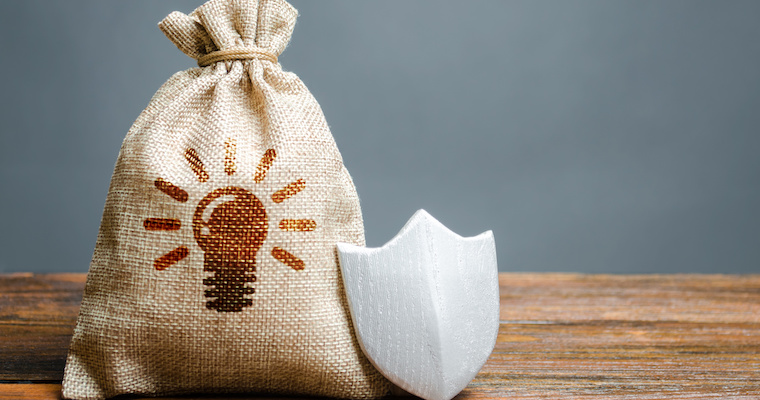Should You Sell or Hold That Patent?

Approximately 16% of patents change hands during their lifetime. A patent in the right hands can be a win-win for both the buying and selling firms, as well as for consumers who can benefit from the products and services that the patent makes possible. Our study of patents changing hands between 57 leading biopharmaceutical firms over two decades shows that the decision to sell or hold onto a patent depends on the patent’s technological relevance to a firm’s patent portfolio and on whether the patent-holding firm sees the potential buyer as a competitive threat or thinks it's highly capable of leveraging the patent itself.
Patent holders who play defense tend to avoid selling their intellectual property, even when a buyer could make better use of it. Entrepreneurs, startups, established firms, and policymakers alike would benefit from understanding the underlying mechanisms that lead participants in the patent markets to buy, sell, or hold.
Patents’ Strategic Benefits: Offensive and Defensive
Patents grant their owners an exclusive legal right over the use of an invention for a limited time in exchange for public disclosure of the invention. They not only protect a firm’s intellectual property (IP) but also act as intangible assets that can be bought or sold.
Here's an analogy from sports or military settings. On the one hand, firms can go on offense by commercializing their patent’s technology when that patent has the potential to generate economic returns. This value is particularly high for firms whose manufacturing, distribution, and marketing assets can easily turn the patent into a new product or service. On the other hand, firms can opt to play defense when the patent contributes to developing a patent fence that protects existing economic returns. In general, technology progresses by standing on the shoulders of interdependent giants. Consolidating patent rights around a particular technology could partially immunize a firm against the threat of patent litigation or infringement and enable the firm to safeguard its investments in new technologies.1
The Innovation Marketplace
Buying and selling patents can be an efficient way to innovate and breathe new life into dormant technology. Firms can sell their own underutilized patents and buy externally developed patents cost-effectively in the innovation marketplace. When a patent reaches the right hands, the resulting innovations can benefit everyone: sellers and buyers as well as consumers. Moreover, active markets for patents can unleash a chain reaction of innovation in the economy.
We call the technology marketplaces where technology vendors license, buy, or sell patents “markets for innovation.”2 An active market optimizes innovation efficiency because a firm can buy the IP rights it needs instead of trying to design around or re-invent the wheel, and thus can re-direct its resources towards further R&D. Original patent holders can also make money by liquidating an underused IP asset to another firm.
Our research3 found that patent trades between firms are more likely to arise when a potential buying firm’s portfolio includes other patents that are similar or complementary. More interestingly, two additional factors play important roles in the decision to sell or to hold: the current patent owning firm’s perception of product-market rivalry with a potential buyer, and how it views its own technological capability.
Our Study
Drawing on the Nobel laureate economist Ronald Coase’s theorem (1960), which says that firms tend to reallocate resources to other firms in a mutually beneficial manner,4 we found that firms are likely to transfer patent ownership to another firm that could better utilize a particular patent. We looked at the technological relevance of each patent to every firm’s patent portfolio, and how the relative patent-firm technological distance determines which user could enjoy better strategic benefits from the patent. To better understand this dynamic, we analyzed 40,110 U.S. patents initially granted to 57 major biopharmaceutical firms, and all the patents that changed hands between these firms afterward between 1987 and 2016.
In general, a patent can generate higher economic returns when the patent’s technology more closely resembles a firm’s other patents. A patent more likely changes hands when the patent is technologically more relevant to a potential buyer’s patent portfolio than to the portfolio of the firm that developed the patent.
However, two factors can complicate patent sales even to another firm that could potentially use the patent more productively: the original patent-holding firm’s perception of (1) product-market rivalry with specific buyers and (2) of its own technological capabilities. The patent-holding firm is less likely to sell to a potential buyer in direct competition in its market, because any gains from such a patent deal with a rival might be outweighed by lost revenue and market share. As a result, product-market competition acts as a barrier to innovation exchange. What’s more, a patent owner may not even consider putting a patent on the market if it feels confident in its ability to leverage the proprietary invention, even when this invention has a less close fit with its current technology portfolio than does a given potential buyer’s. When a patent-holding firm is technologically capable and can generate higher economic returns from utilizing and commercializing its own inventions, its patents become more deployable and valuable. In contrast, potential buyers may think that they will not be able to exploit the patent fully because they do not have the complementary technologies or know-how of the original owner, thus discouraging the patent ownership takeover. Consequently, an interfirm patent transaction is less likely to take place when its original owner is technologically capable, even if its patent seems to fit better with the potential buyer’s portfolio.
Takeaways
Patent owning firms may want to monetize unused or underutilized intangible assets, whereas others may want to acquire the rights to high-quality, low-priced technical solutions from innovation markets. On the one hand, by selling a patent to another firm that can utilize the patent more effectively, the patent owners may recoup their R&D investments and capture greater economic gains than they could have extracted using the invention in-house. Moreover, patent sales save expenses, time, and effort for managing and maintaining their own technology portfolio.
On the other hand, other firms could benefit from buying a patent developed elsewhere. Given the enormous upfront R&D investment, patent acquisitions save the likely cost and time that the managers and their firms would take to develop the patented inventions themselves. Because of time, staff, and financial constraints, such benefits could be particularly crucial for startups. More importantly, an acquired patent not only bolsters IP protection for a buyer’s products and services but also resolves hold-up problems in technology commercialization.
However, what is good for managers and their firms may not always be good for society as a whole. Antitrust issues have arisen as some non-practicing entities (e.g., patent trolls) buy patent rights merely to collect royalties or litigate firms and entrepreneurs for settlements without any intention to develop or commercialize the patented inventions, thereby stifling market competition and innovation. What is good for efficient innovation markets matters more, because society will be better off when our intellectual legacies are most effectively used for the common good.
Conclusion
Vibrant, efficient markets for innovation lead to gains in economic returns, technological progress, and ultimately broader social welfare. Dynamic technology markets promote greater R&D investments because, even if another firm ends up commercializing the creations of the original inventors, some of the economic gains could still accrue to the inventors. Such market transactions also make accessible higher-quality and lower-priced external resources, thereby catalyzing new technological and business opportunities. Further, consumers benefit from useful, affordable products and services developed as a result of IP rights changing hands.
In short, when a patent changes it hands serves as an essential puzzle piece for another firm in the markets for innovation, while giving new life to otherwise idle technology. Policymakers who understand how patents change hands might be able to design market mechanisms that foster science, technology, and innovation, and also minimize the tragedy of great ideas that never see the light of day.
Explore the Research
Kwon, J. H., Park, H. D., Deng, S. When Do Firms Trade Patents? (https://doi.org/10.1287/orsc.2021.1471) Organization Science, July 2022.
References
1. Ziedonis, R. H. Don’t fence me in: Fragmented markets for technology and the patent acquisition strategies of firms. Management Science. 50, 804–820 (2004).
2. Arora, A., Fosfuri, A., Gambardella, A. Markets for Technology: The Economics of Innovation and Corporate Strategy (MIT Press, Cambridge, MA, 2001).
3. Kwon, J. H., Park, H. D., Deng, S. When do firms trade patents? Organization Science. 33, 1212–1231 (2022).
4. Coase, R. H. The problem of social cost. Journal of Law and Economics. 3, 1–44 (1960).




